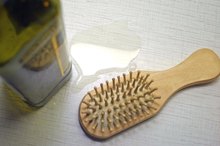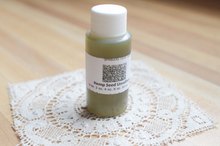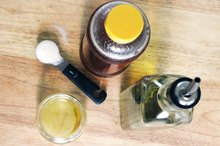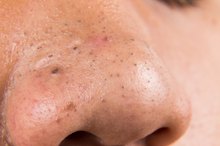How to Use Moroccan Oil
Moroccan oil, also called argan oil, comes from a tree fruit that mostly only grows in southern Morocco 4. It's one of the rarest and priciest oils in the world, but the beauty benefits are worth the cost. Moroccan oil contains fatty acids that soothe dry skin, moisturize your face and hydrate stressed-out hair. It works miracles on almost any part of your body, so you'll see improvement no matter how you use it.
Add 1 teaspoon of Moroccan oil to your bath water, then soak in it for as long as you'd like. The oil helps soften your skin.
How to Make Face Cream Using Rosehip Oil
Learn More
Apply a few drops of the oil to your skin when it's damp. Massage the oil into your skin with gentle circular motions.
Rub a few drops of Moroccan oil into your dry hair, then use a wide-tooth comb to distribute it evenly 4. Let the oil penetrate your strands for up to 10 minutes, then rinse it out in the shower and shampoo as usual. For deeper conditioning, put on a shower cap after applying the oil, then dampen a towel with hot water and wrap it around your head. Wait for up to an hour, then rinse. Alternatively, apply the oil after shampooing. Let the oil soak in for five minutes, then rinse it out.
Olive Oil for a Dry, Itchy & Flaky Scalp
Learn More
Use several drops of the oil as a face and neck moisturizer. Apply the oil in the morning or at night after cleansing your face.
Rub some Moroccan oil into your feet at night, and then put on a pair of socks. Leave the socks on while you sleep. You'll wake up to softer feet.
Combine one or two drops of the oil with your bronzer or foundation. Apply the makeup as usual for a natural-looking glow.
Add up to 20 drops of Moroccan oil to your usual daily moisturizer, then mix well. Apply the moisturizer every day as usual.
Combine equal parts Moroccan oil and fresh lemon juice, then rub the mixture into your nails. Alternatively, soak your nails in the mixture for up to 15 minutes once per week.
Mix several drops of the oil with a drop or two of vanilla extract and a pinch of brown sugar. Rub the solution into your lips to soften and exfoliate them.
Make a facial mask by combining three drops of Moroccan oil with 1 tablespoon of honey, 1 tablespoon of fresh lemon juice and 3 teaspoons of Greek yogurt. Massage the mixture into your skin and rinse off after 10 minutes.
Tips
If Moroccan oil is too costly, consider using coconut oil as an alternative. It offers many similar benefits.
Warnings
If used frequently, Moroccan oil may clog pores and cause pimples. Limit your use of the product if you have oily skin.
Related Articles
References
Writer Bio
Melissa King began writing in 2001. She spent three years writing for her local newspaper, "The Colt," writing editorials, news stories, product reviews and entertainment pieces. She is also the owner and operator of Howbert Freelance Writing. King holds an Associate of Arts in communications from Tarrant County College.









